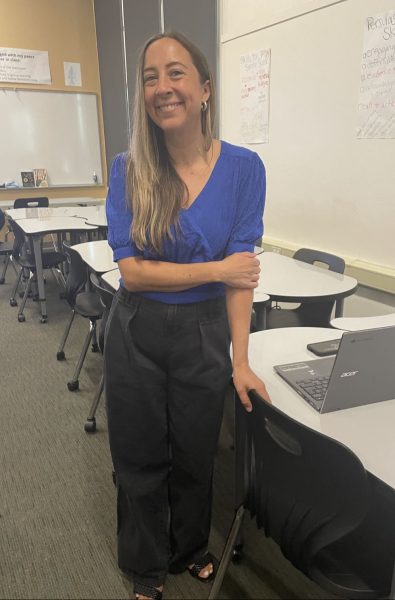If you asked a high school student what they know about “CBE learning”, they could probably tell you what it stands for – competency-based education, but not much else.
Although many teachers have been using the competency-based learning method for a while, it hasn’t been required in classrooms until recently. A few common concerns for students or parents are, “Will it affect college transcripts or work applications?” “Is it something I need to pay attention to?”
Well, who would be better to answer these questions than teachers? And who’s a better teacher to ask than Shauna Stafford, who has been teaching English for 14 years and following CBE guidelines for 12 of those years?
“The goal of CBE is to be extremely clear,” Stafford said, “ ‘ This is what you’re working on.’ When students learn that, then they tend to kill it in college.”

CBE is a skill-based form of education that allows students to learn at their own pace. Instead of using the A-B-C-D-F grading scale that most students are used to, CBE uses a 1-4 scale, with one being the rough equivalent to a D and 3-4 being roughly equal to an A. CBE allows students to have more control over the subjects and skills that they learn. This gives them the freedom to master required rubrics in a more engaging way, with feedback and tools personalized to help them towards their goals.
“They [students] get to do the things they love,” Stafford stated. “That’s CBE. That’s like the meaning of CBE.”
As for college, students don’t need to be worried, Stafford explained.
“If students understand how they are being graded, those are the students that are the most highly successful,” she expressed.
Because CBE is adaptive to different skill levels, students receive constructive feedback that helps them to succeed. Some college courses also use CBE, so students who start using this system now are experienced.
Research shows that communication and literacy skills are essential for students to succeed beyond high school. Many jobs require the ability to communicate and perform, CBE also prepares students for hands-on careers such as being an EMT or a waiter.
“If we do CBE well, instead of me saying, ‘It’s really important that you memorize all this stuff about To Kill a Mockingbird’, I’ll be saying, ‘Can you communicate well? Can you write really clearly? Can you read to make sense of things,’” Stafford claimed.
This form of education also has its drawbacks. While it may work fine in Stafford’s English class, in other subjects, such as math and science, CBE rubrics may be more difficult to apply. These classes have objective standards that make it difficult to assess a student’s specific skill level.
“I completely understand teachers that are just like… ‘What is happening? What is this?’… It’s going to feel different for different people,” Stafford said, in regard to these concerns.
A potential negative factor of CBE is that students can lose accountability. Additionally, assignments have fewer time constraints. For example, if a student isn’t proactive, they can quickly fall behind, taking away from their ability to work towards deadlines. Alternatively, this can be viewed as students being able to learn in their own time.
“It would be helpful if students had teachers that they knew had their back and would not allow this system to get in the way of that,” Stafford commented.
As long as students stay on top of their work, CBE learning shouldn’t impede one’s success. Some, like Stafford, believe it can prepare students for the future just as well as standard grading.
